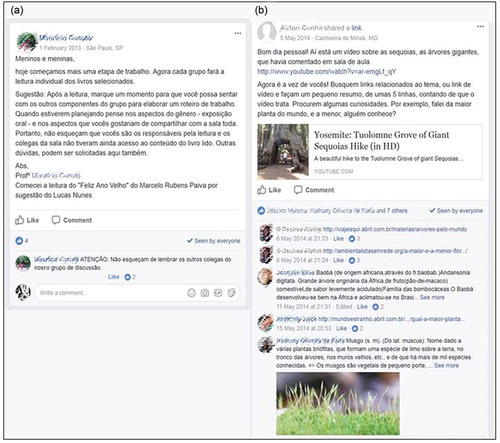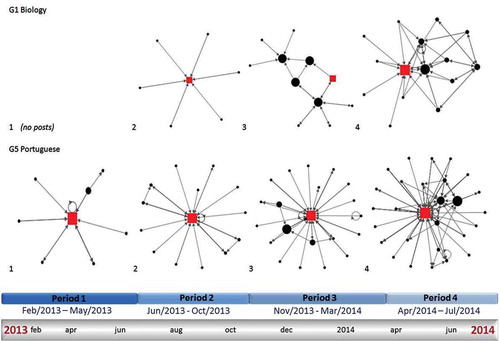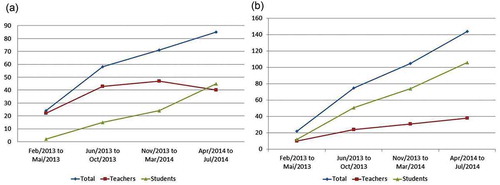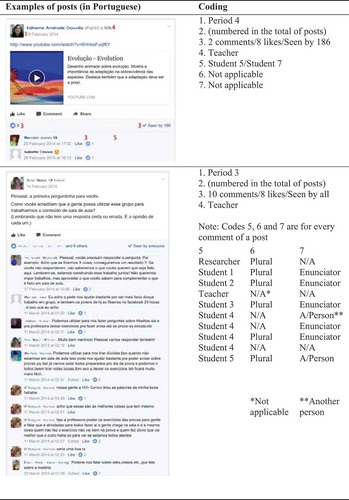Figures & data
Table 1. Groups of teacher-students.
Table 2. Categories used for data analysis.
Figure 2. (a) Post from the first period analysed in this study: teacher posts, comments and students only “see” the post. (b) Post from the last period analysed in this study: teacher posts, students comment, like and see the post.

Figure 3. Network analysis from G1-Biology and G5-Portuguese during the four periods described in . The squares represent the teachers, and the circles represent students. G1-Biology has no graph for period 1 since the group started later than the other groups. Bigger figures represent the person interacted more inside the network.



